Motorola Moto G Review
by Brian Klug on December 18, 2013 2:00 PM EST- Posted in
- Smartphones
- Motorola
- Mobile
- *VA
- Cortex A7
- snapdragon 400
- Moto G
Display on mobile devices is one area where we’ve seen considerable improvement. Pixel density has gone up, contrast ratios have improved, and the emphasis on low power in a platform gated by its battery size means there’s always innovation happening. In the case of the Moto G, what we’re after should really be a display that looks visually appealing without any of the egregious issues that plague most midrange devices – poor viewing angles, low resolution, low contrast, dim displays.
On paper, the Moto G has what would probably have been a flagship display for a mobile device a year or two ago, it’s a 4.5-inch LCD with 1280x720 resolution and 326 PPI pixel density. The comparison point is the Moto X with a 4.7 inch AMOLED panel of the same 720p resolution and 312 PPI pixel density.
I’m pretty impressed with how the Moto G’s display looks. Subjectively, viewing angles are good, there aren’t any of the issues I normally attribute to non-flagship devices either with low pixel density or contrast that fails to please. There’s no light leakage at all from any of the corners.
One unfortunate thing about the Moto G I was sampled however is the presence of two small bubbles in the cover glass. I initially thought these were dust, but inspection with a microscope reveals they are in fact inhomogeneities in the cover glass.
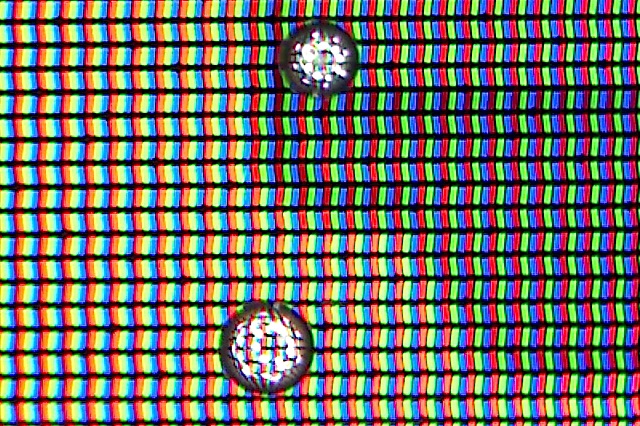
I’m not sure whether these kind of defects are within spec for the Moto G, but they’re distracting and visible on most solid colored UIs or views. I’ve never seen something like this on any handset I’ve reviewed to date.

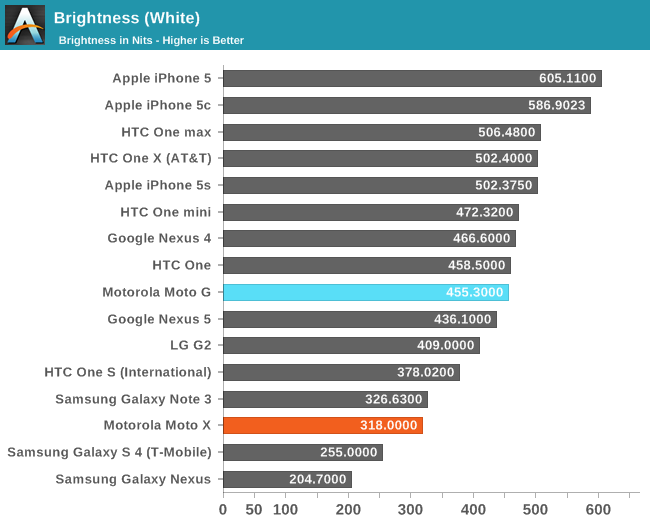

The Moto G goes plenty bright, at just over 455 nits, and delivers contrast numbers that are pretty darn good for the price point at just shy of 1200. Normally black levels are out of control on the lower end devices, I’m not sure if the Moto G uses an IPS panel, but suspect it does.
Upon inspection I immediately noticed that the Moto G display was very, very blue. To measure color accuracy we turn to the same combination of measures that we have used for a while now.
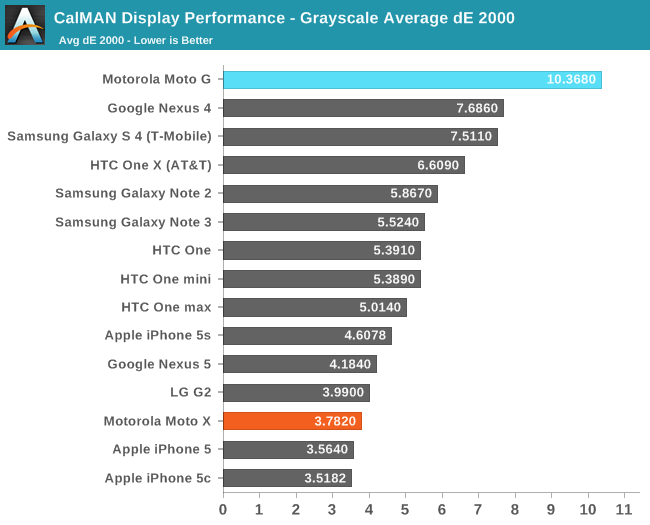
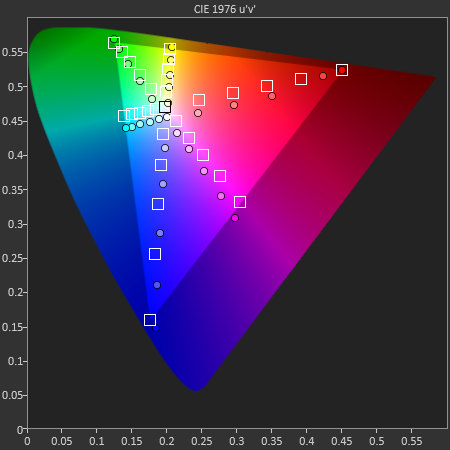



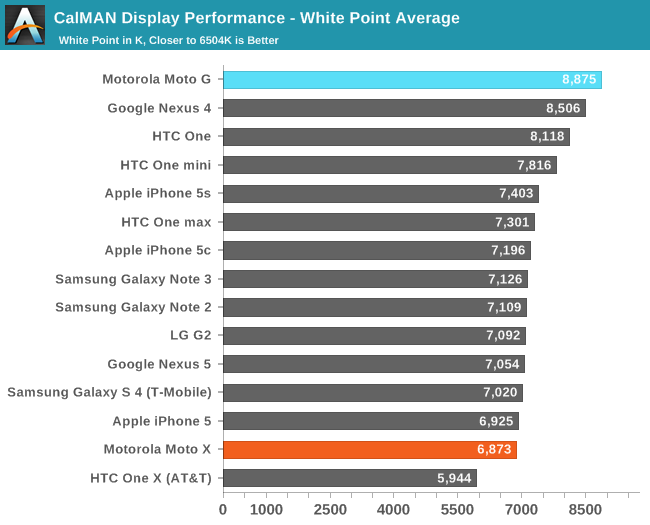
My comparison points are unfortunately primarily high end devices, which makes the Moto G look comparatively poor. The Moto G display tuning is indeed very blue with a white point of nearly 9000K, but I wouldn’t be surprised to learn this is a function of the backlight LEDs used or intrinsic properties of the panel.
Color calibration is something we’ve only just now started to see get taken seriously on the high end devices, if we can’t expect it to be a regular staple there, the midrange is obviously a lost cause. I wouldn’t fault the Moto G for not being very accurate, but it is something to be aware of as a sacrifice at this price point if you’re considering it over a high-end phone. On the flipside, the pixel density and contrast of the Moto G’s display seems excellent given the price, and I suspect the defects in my Moto G’s cover glass are specific to this unit.



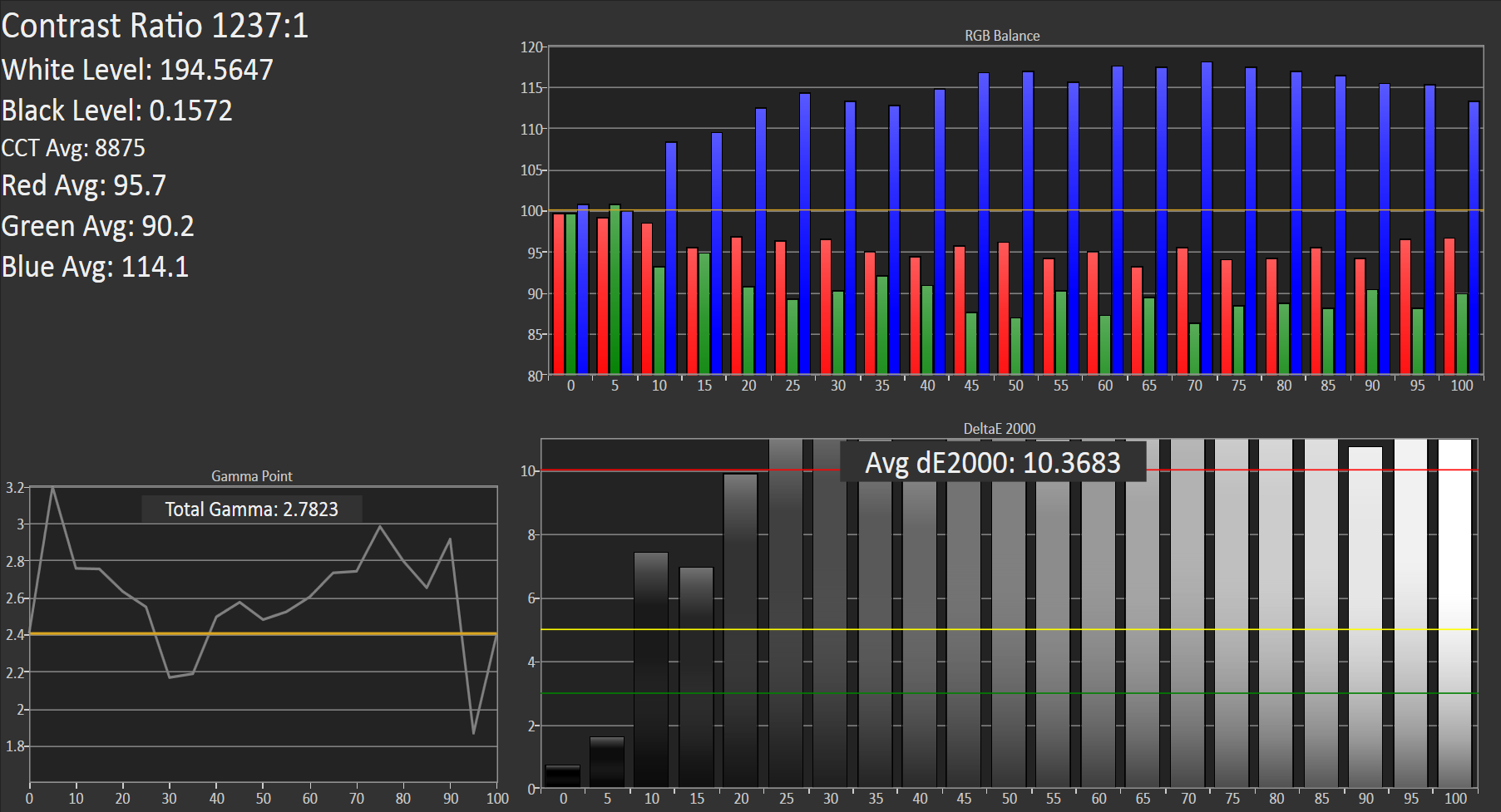








120 Comments
View All Comments
user777 - Friday, January 3, 2014 - link
HTC Desire 300/500/600 models are intended to the same market niche.carancho - Wednesday, December 18, 2013 - link
I'd have even greater doubts when it comes to Motorola's promises. They've eft their previous flagship customers in the cold, as the RAZR HD is still on Android 4.1 and with no indications of ever being updated. The phone was out several months AFTER Google's acquisition, and it compares horrible with the treatment that Samsung and HTC's customers got.Really, Motorola has been promising updates generation after generation, and never shipping them. Do not trust them, you'll get burned.
blanarahul - Wednesday, December 18, 2013 - link
Jelly Bean doesn't need a update that badly.But I guess you can't blame Qualcomm for it since the S3 is already on Android 4.3.
carancho - Thursday, December 19, 2013 - link
The local version that I have of the RAZR HD has several major bugs. At least a revision to 4.1 would be needed.Notice that Googlerola has provided ZERO updates for the RAZR HD in terms of providing updates not available prior to the launch (as was the case with 4.1).
RMSe17 - Wednesday, December 25, 2013 - link
Actually, I wold consider any android pre-4.4 (and thus not having pre-compilation) as completely obsolete.razorsbk - Saturday, December 28, 2013 - link
RAZR HD is officialy supported by CyanogenMod, and CM 10.1 stable is available for it.jeffkibuule - Wednesday, December 18, 2013 - link
If you care about updates, don't get anything besides a Nexus. Simple as that.uhuznaa - Wednesday, December 18, 2013 - link
And even then you can stop caring 18 months later.sprockkets - Wednesday, December 18, 2013 - link
Referring to the Galaxy Nexus? Guess what? The 18 month thing is a red herring.Google has updated all their phones longer than 18 months. That also *includes* the Gnex. That's right, it got 4.3 *19 months* into its life.
TI dissolved its OMAP team. No one can update the drivers for it anymore.
Still won't believe me? Google is replacing free of charge all 1st gen google glasses because it can't be updated. It also uses OMAP.
uhuznaa - Thursday, December 19, 2013 - link
It's Google who said that it will support Nexus phones for 18 months, not me.